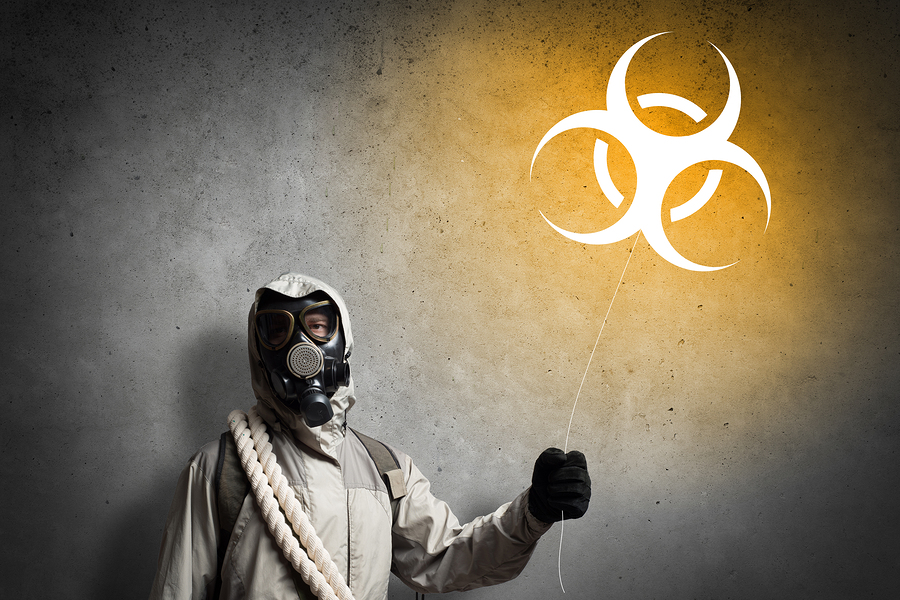The signs and symptoms of radiation sickness depend on the severity of the exposure. The measurement for radiation exposure is done in a unit called the gray (Gy). Symptoms will appear when the entire body receives a dose of 1 Gy or greater (a typical x-ray focuses 1/10 Gy to a small area of the body). A dose greater than 6 Gy is untreatable and usually fatal.
A dose between 1-2 Gy will produce nausea and vomiting within six hours. Within four weeks these patients will begin to experience weakness and fatigue. If the exposure is more severs (between 2-4 Gy), the patient will also experience hair loss, bloody vomit and stools, poor wound healing, infections and low blood pressure usually within one to four weeks. A more severe dose (between 2-6 Gy) will produce nausea and vomiting within two hours; the patient may also experience diarrhea, fever and headache. Severe exposure (8 Gy or higher) will produce nausea and vomiting within 10 minutes. Severe exposure will also immediately produce dizziness and disorientation, weakness, fatigue, hair loss, and bloody vomit.
Treatment starts with decontamination–removing all exposed clothing and washing the skin to remove any radioactive particles. This prevents further distribution of radioactive particles into the body.
Bone marrow damage is one of the long-term problems in radiation exposure. In moderate to severe exposure the patient has trouble with wound healing and infections. Using a protein based medication, called granulocyte-colony-stimulating factor, promotes the growth of white blood cells and helps to offset the damage to the bone marrow.
Some substances are used to reduce the organ damage caused by radioactive particles. These treatments are for specific types of exposure. Potassium iodide is taken to prevent damage to the thyroid from radioactive iodine. Some people have been taking potassium iodide prior to exposure to prevent damage should they become exposed, some have the mistaken idea that potassium iodide is some kind of panecea. Potassium iodide cannot prevent radioactive iodine from entering the body; it can protect only the thyroid from radioactive iodine, not other parts of the body. Potassium iodide cannot reverse the health effects caused by radioactive iodine once damage to the thyroid has occurred. It also cannot protect the body from radioactive elements other than radioactive iodine—if radioactive iodine is not present, taking potassium iodide is not protective. A doctor should be consulted before taking potassium iodide. Some people are allergic to iodine and may react badly to taking it. People with thyroid disease should not take iodine without first discussing it with a doctor.
Prussian blue is a dye that binds to radioactive cesium and thallium and allows the body to eliminate these specific particles. Diethylenetriamine acid (DTPA) binds to metals. DTPA will bind to plutonium, americium and curium and allows the body to eliminate these radioactive substances through the urine.




